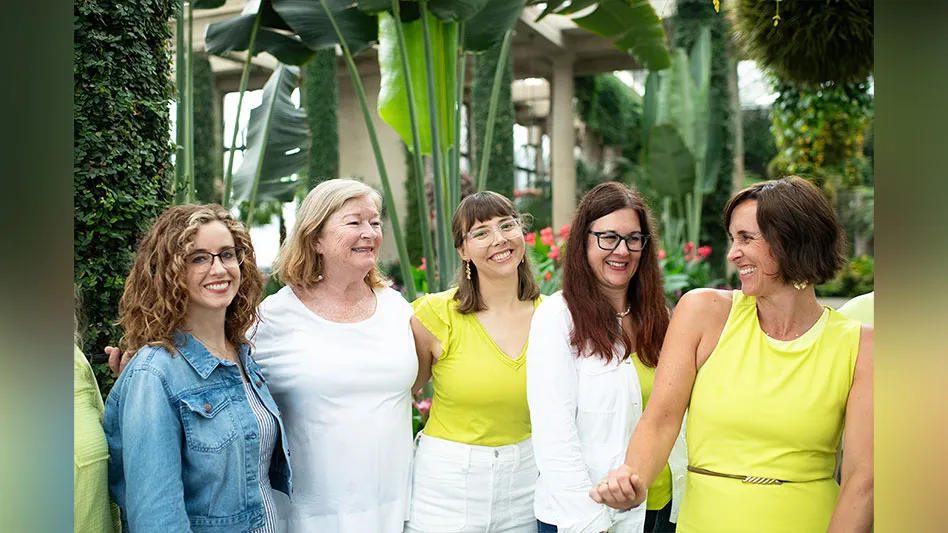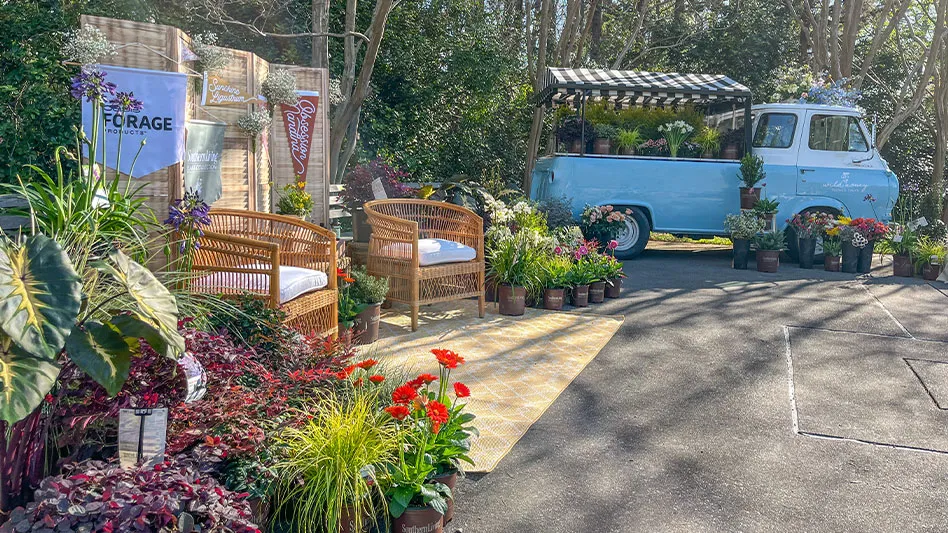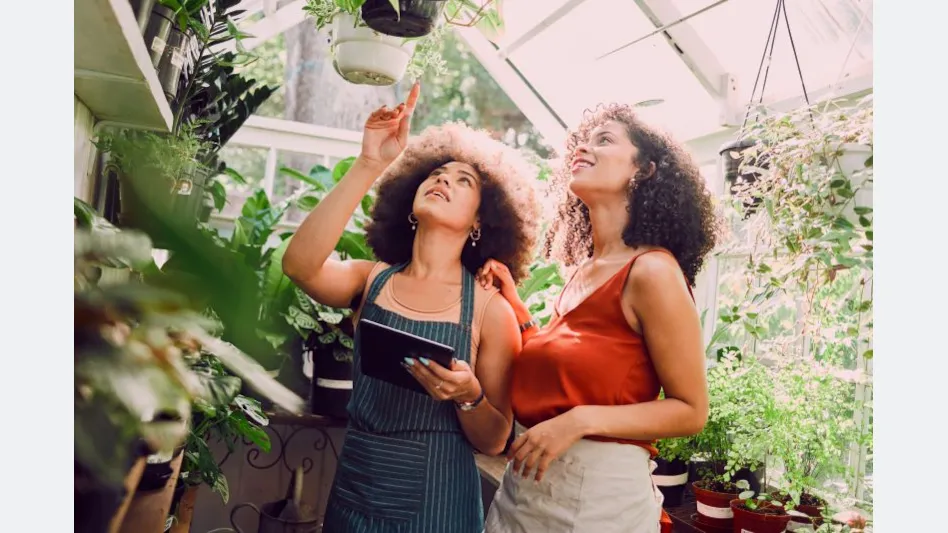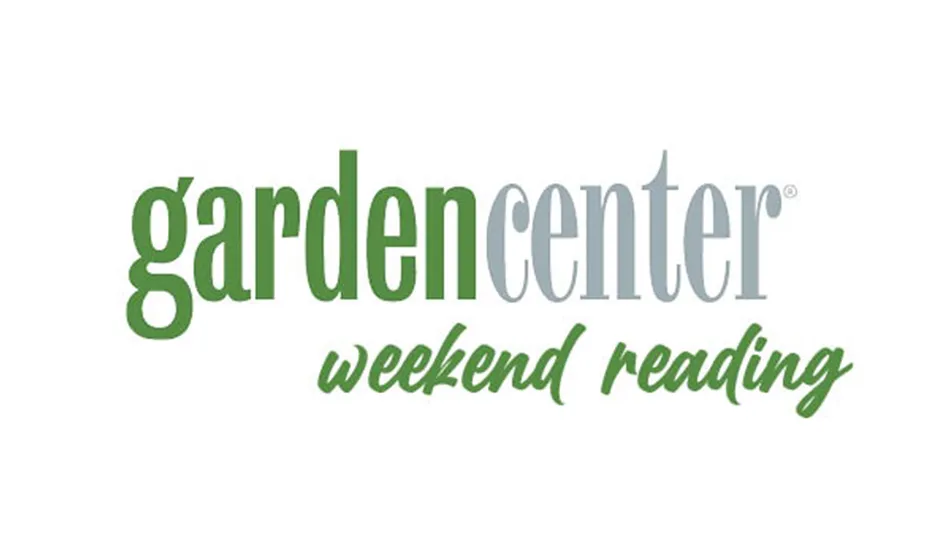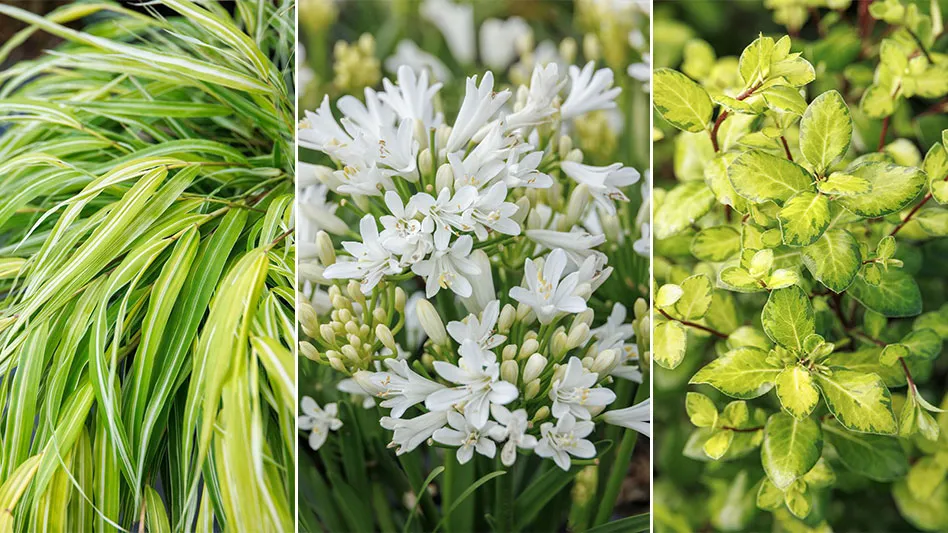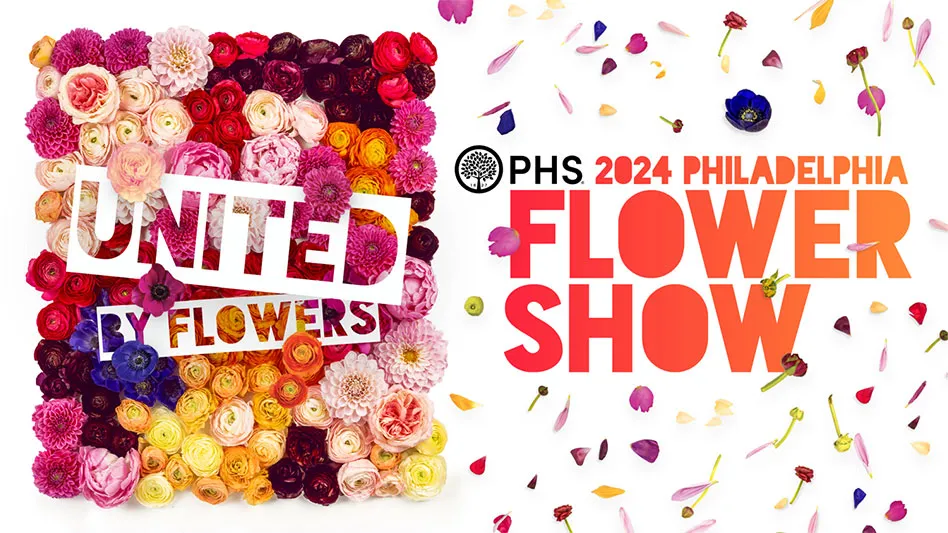
All photos courtesy of Philadelphia Flower Show
The Pennsylvania Horticultural Society is sharing its forecast for the top trends that emerged at the 2024 Philadelphia Flower Show, “United by Flowers.”
The Flower Show has a long history as a globally recognized stage on which floral and garden designers and gardeners can showcase new creations, like the poinsettia during the inaugural show in 1829.
In its 195th year, “United by Flowers” highlighted a variety of new trends in flowers, houseplants, landscapes and floral event design, which PHS is sure will dominate in the coming years across the gardening and floral industries.
“The Philadelphia Flower Show provides a platform for some of the world’s most renowned designers and growers to highlight the best and newest ideas in the industry. This serves as a source of inspiration and joy for our visitors. These displays often reflect up-and-coming industry trends that are then incorporated by gardeners, landscapers and florists of all levels around the globe,” said PHS VP and Flower Show Creative Director Seth Pearsoll.
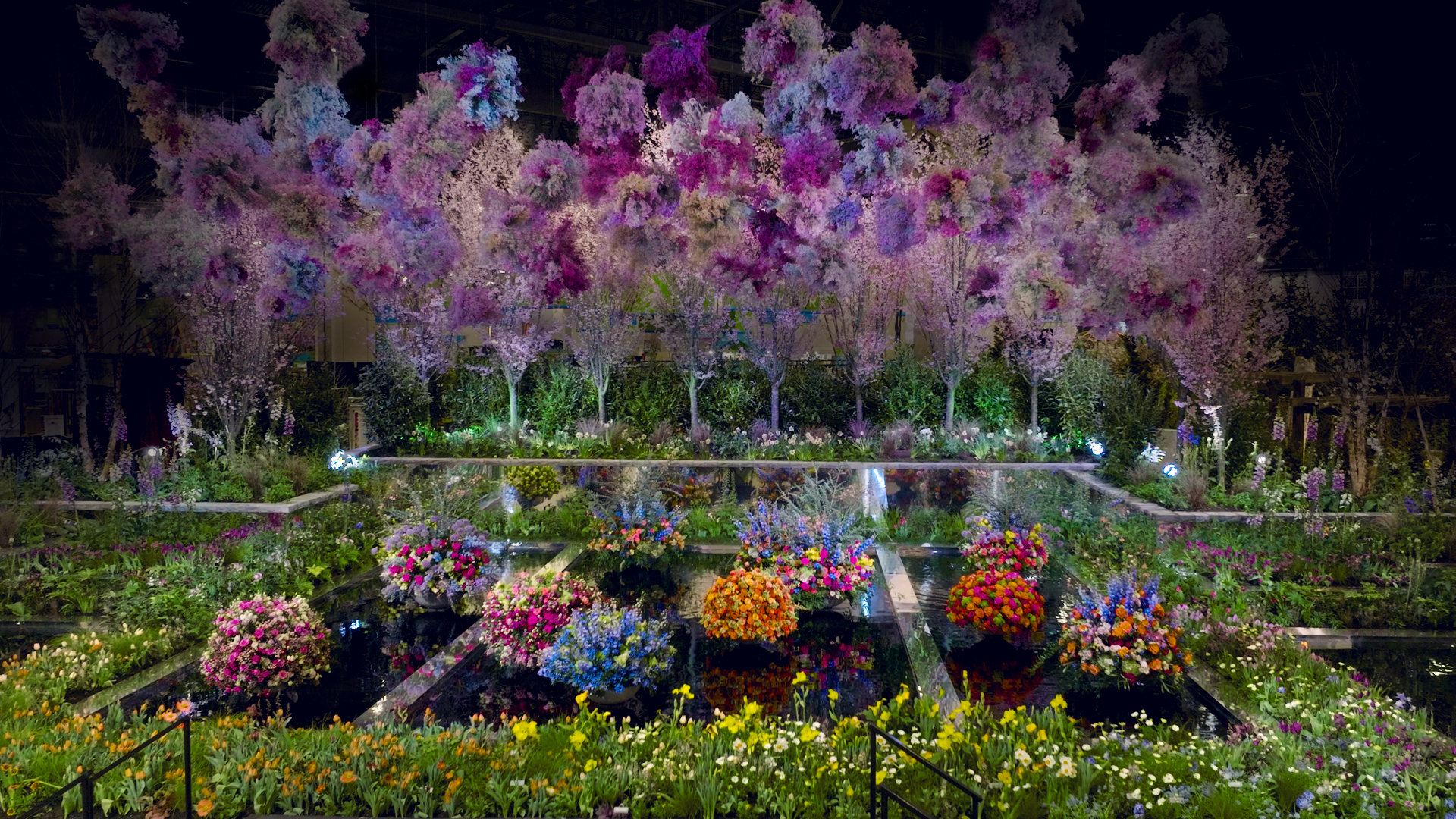
The full list of trends identified at the 2024 Philadelphia Flower Show, which was March 2-10, are listed below.
Trending houseplants: Aroids, begonias, gesneriads and terrariums
The 2024 Philadelphia Flower Show displays thousands of plants each year in its plant competition housed at the PHS Hamilton Horticourt, the competitive plant and flower area within the event. Among them, these three types of plants and terrariums reigned supreme in addition to being incorporated into many of the large-scale exhibits.
Aroids such as philodendron, amorphophallus, monstera and anthurium continued in popularity. All these plants had individual categories in the show’s competitive classes and excellent participation, reflecting a still-growing interest in this plant family.
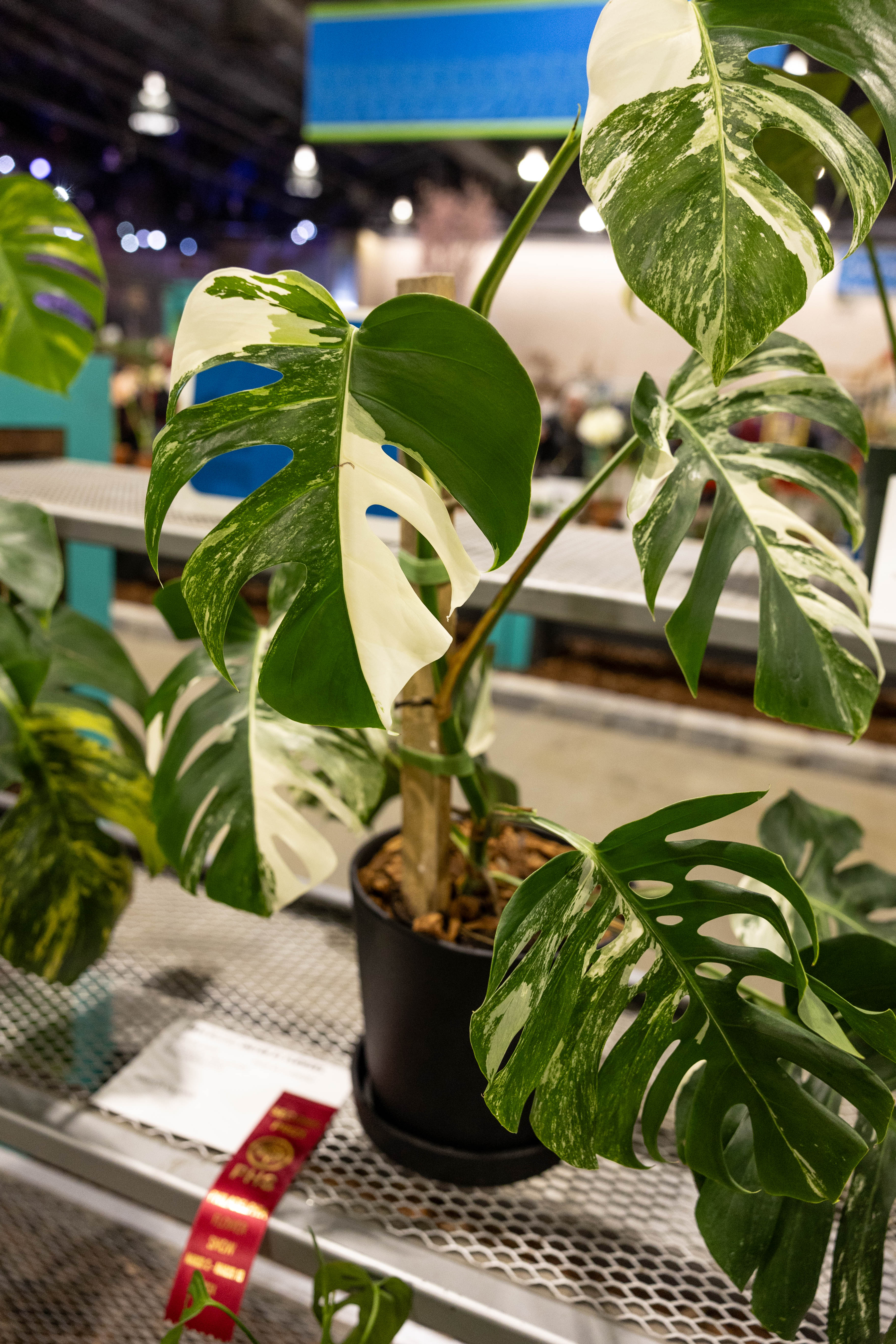
Begonias saw a surge of public interest, with more begonias displayed, along with a wide array of rare begonias, such as Begonia pteridifolium and Begonia montaniformis.
Gesneriads, the flowering plant family most popularly known for including African violets, also saw tremendous growth, including Streptocarpus, Sinningia, Petrocosmia, Primulina and Kohleria.
Terrariums saw an explosion in popularity at the 2024 show. This approach to growing plants can accommodate a wide array of plant groups, including gesneriads, ferns and carnivorous plants.
They are prized for their eye-catching container designs, and the wide variety of style options can make them low-maintenance, eye-catching and approachable for all levels of gardening experience.
Landscape trends
Rewilding of land is a gardening and landscape trend on the rise in 2024, especially the rewilding of urban areas. Rewilding helps to increase biodiversity and restore the natural processes of an ecosystem by reducing or ceasing human activity and reintroducing plant and animal species to take over a space naturally.
This trend was well-represented at the 2024 show in Kelly Norris’ exhibit “A Beautiful Disturbance," which featured a vacant lot overtaken by plants, as well as Apiary Studio’s exhibit “Right of Way,” which celebrated the plants and wildlife found on highway roadsides.
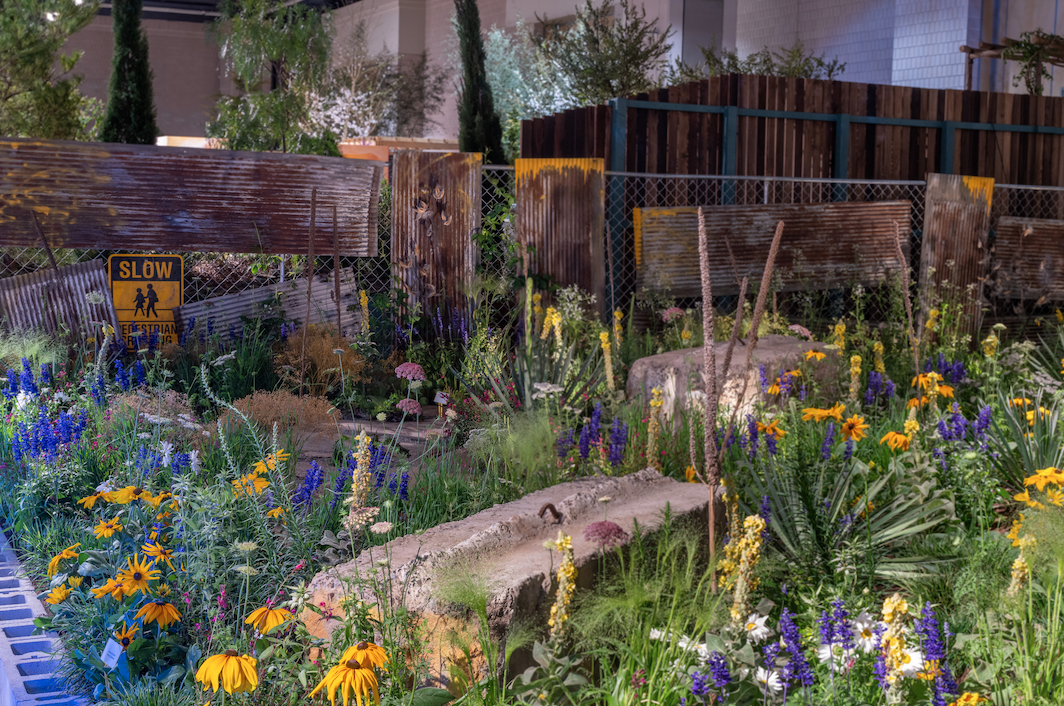

Floral event design trends
Hyper-locally sourced cut flowers are another trend identified at the 2024 show. Jennifer Designs’ exhibit, which depicted a breathtaking floral map of the U.S. and celebrated how we are all connected through flowers and gardens, utilized hyper-local cut flowers to color-code the floral map according to USDA hardiness zones. The use of locally sourced cut flowers in this display has shed light on the carbon footprint of mass-grown imported flowers.

Jennifer Designs' use of hyper-local cut flowers.

Virtual gardens use mixed media, projection and photography depicting gardens, flowers and plants with physical flowers. This connotes a rise in popularity of incorporating virtual media to create an immersive floral experience for guests.
Table-top topiaries and arrangements provide pops of color, texture and unique shape throughout an event space or floral display.
Floral trends: Color, scale, shape and structure
Monotone, bold neon colors (especially orange and pink) and color-blocking: This use of simplified yet striking and bold colors can already start to be seen across the floral industry and in many floral event settings. Large-scale statement floral sculptures and arrangements that are focal points are taking place over the previous preference for many smaller clusters of florals.
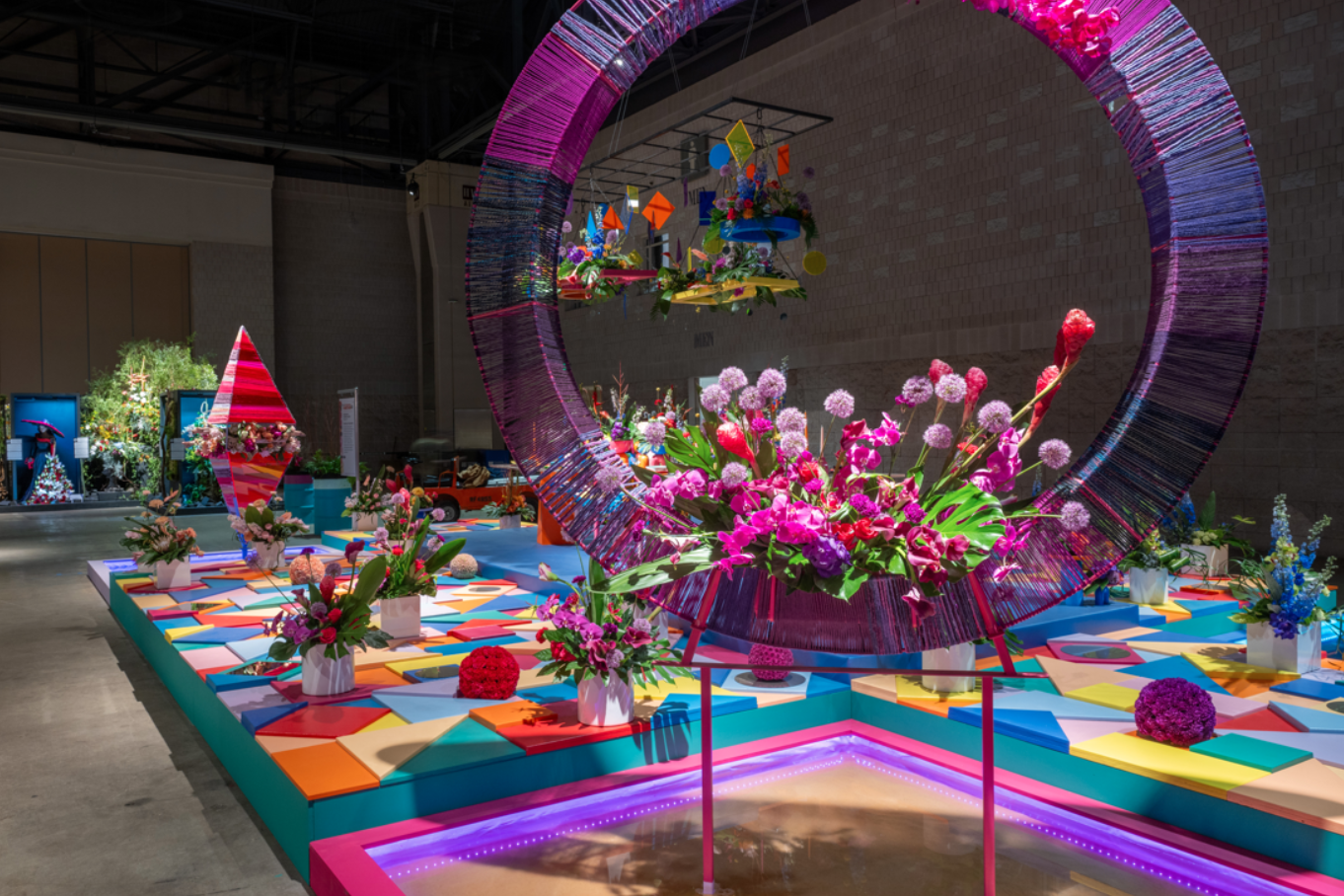
Organic materials like fruits and vegetables will be included in arrangements and designs, providing a bit of whimsy.
Organic shapes, particularly from 3-D printers and the use of untraditional media such as concrete, will allow designers to display stunning and organic shapes and masses using natural materials such as moss, grass and foliage, reflecting the idea of the “no flower-flower arrangement.”
Anthurium in unique, vibrant colors that are both natural and created will provide an eye-catching addition to arrangements, sculptures and floral displays.
To stay up-to-date with the Philadelphia Flower Show, sign up for updates at phsonline.org/the-flower-show.
Latest from Garden Center
- Proven Winners introduces more than 100 new varieties for 2025
- Weekend Reading 5/10/24
- The Family Business, Part 2: Agreeing (and disagreeing) on capital investments
- Registration opens for Darwin Perennials Day
- Weekend Reading 5/3/24
- Weekend Reading 4/26/24
- Smith Gardens assumes operations of Skagit Horticulture
- Beneficial insect sachets now included with Monrovia mandevilla
